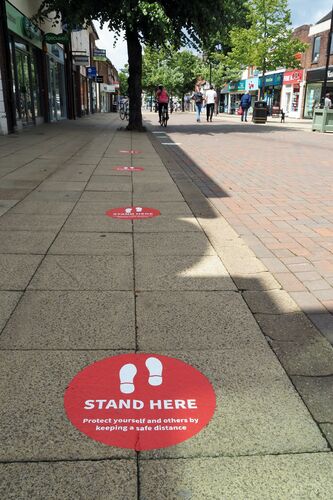New Social Distancing Guidelines impacting on Accessibility for People with Disabilities
August 31 2020, 12:42pm

In order to safely re-open our towns and cities, local authorities around the country have been tasked with developing Interim Mobility Plans.
Each plan included details of how;
- streetscapes would be redesigned,
- traffic would be redirected,
- and road layouts would be changed to allow for social distancing.
The provision of guidelines to businesses around on-street queuing, and other alterations are also outlined.
DFI are concerned about how these changes may affect physical access for people with disabilities. In May, we wrote to all Local Authorities asking them to actively consult with people with disabilities in the development of Interim Mobility Plans.
We also wrote to Universal Access groups, our members, and Public Participation Networks, PPNs, encouraging them to get in touch with local authorities and offer their support.
In spite of this, we’ve got reports of negative outcomes of mobility plans being introduced in the absence of meaningful consultation. Examples include;
- Disabled parking bays removed or relocated.
- Disabled parking bays relocated to unsuitable locations, for example where the car door now opens into a cycle lane.
- Audible signals at crossings removed when timers were installed to negate the need to press a button.
- Street furniture and ‘A’ boards being allowed to create obstacles on footpaths, contrary to existing bylaws.
- Bollards or other items being used to denote space for social distancing causing obstructions for people with disabilities.
- Bollards blocking access to dishes in pavements.
We must also acknowledge the many positive examples where Local Authorities have taken effective approaches. Find out what how we’ve been working with Galway City and Wicklow County Council.
